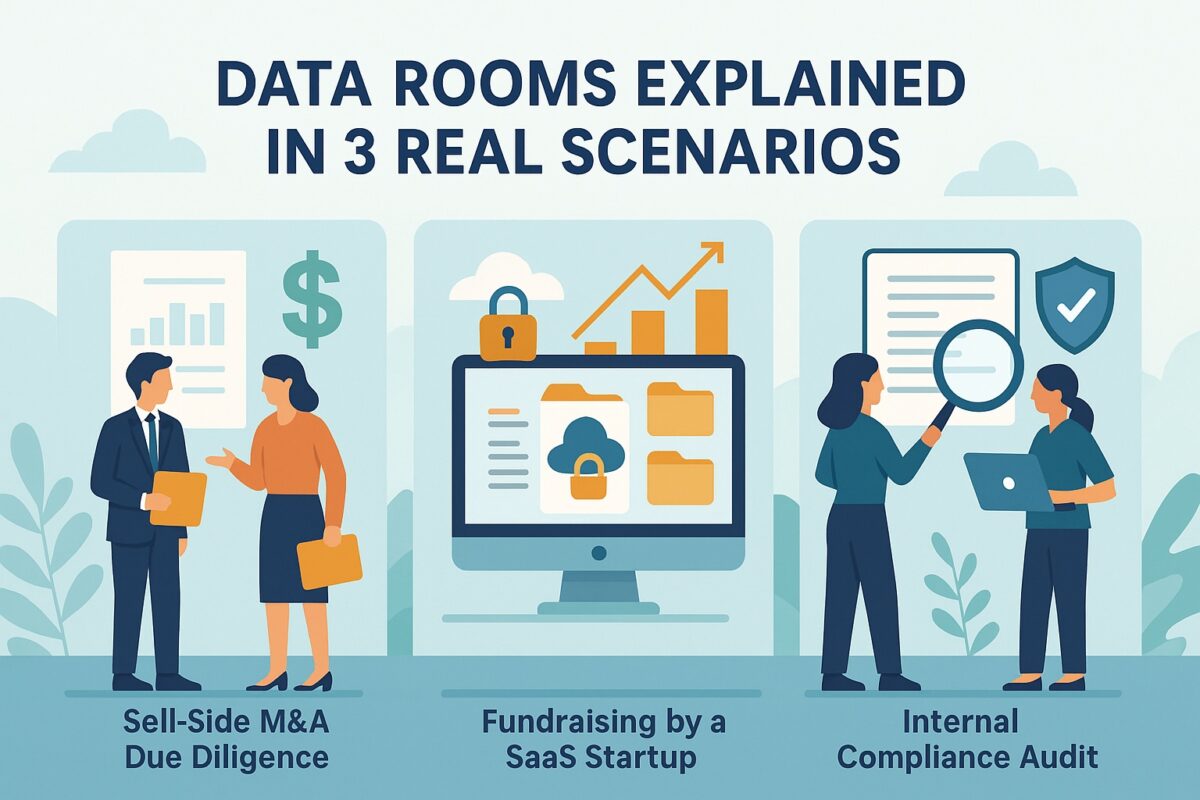A data room is more than a digital storage space — it’s a managed workspace where confidentiality, compliance, and accuracy are essential. While many link data rooms to M&A deals, they serve a much broader purpose. From raising funds to legal reviews, the right system allows safe teamwork without losing control.
To show how and where data rooms prove crucial, this article looks at three real-life situations where organized safe information sharing shapes the result.
Scenario 1 — Sell-Side M&A Due Diligence
A mid-sized logistics company plans to sell. Several buyers show interest so the company must organize and share more than 1,500 files. These include contracts, customer information intellectual property rights, and financial reports — all while keeping talks with different buyers private.
Instead of sending email attachments or sharing cloud storage links, the seller sets up a virtual data room with different access levels. Each potential buyer’s team gets role-based access letting them see the folders that matter for their stage in the process.
Q&A modules handle questions in real time without letting information leak between groups. Watermarks logs of access, and control of versions make sure people don’t misuse sensitive papers — even as things get bigger. Here, the VDR isn’t just a tool that helps — it becomes the deal’s main way of working.
Scenario 2 — A SaaS Startup Raises Funds
A SaaS company in its early days starts its Series B fundraising. It needs to show VCs its numbers, notes from board meetings, deals with customers, and how it keeps things safe. Time is short, and investors from all over North America and Europe are part of this round.
In this case, the VDR acts as a repository ready for due diligence already organized with folders labeled for legal, product, compliance, and finance. The system tags, makes searchable, and controls permissions for uploads – allowing investors to access materials as needed.
The startup’s leadership team gets the extra advantage of tracking activity. They can view which VCs have looked at the documents how much time they spent, and what they’ve downloaded. This information helps guide follow-ups and shows how serious investors are.
Scenario 3 — Internal Compliance Audit in a Regulated Industry
A drug company is doing an in-house check on its rules. This check covers clinical trials how they handle data, and deals with vendors. The review involves teams from different departments outside experts, and strict rules about who can see data under GDPR and FDA laws.
A locked data room makes sure that certain auditors can see each file — from lab results to supplier contracts. The review process is set up to run on its own. The system logs all alerts. It records every time someone looks at a file noting when it happened and who did it. This creates a record that can’t be changed.
This arrangement speeds up the review and protects the company from audit disagreements or regulatory fines. The organized data room becomes a shared area where legal, compliance, and operational teams can work together without risking exposure.
One Platform Many Use Cases
These three examples highlight a key point: a modern data room fits different situations. Whether it’s handling investor research, M&A paperwork, or internal checks, the best platforms focus on data control structured access, and real-time teamwork.
For finance teams legal advisors, and compliance heads, using the right data room means working faster without cutting corners. It’s not about storage — it’s about and enabling the transaction or review process at hand.

